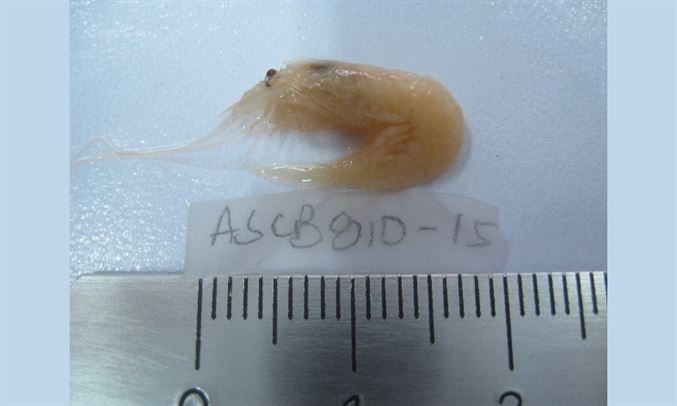This organism’s carapace exhibits a nearly rounded shape, with a length surpassing its width and extending to the level of the second maxilliped. It showcases visible frontal organs at the anterior part and is characterized by the presence of a naupliar eye, flanked by a pair of compound eyes that are already discernible through the carapace. What sets it apart is that six thoracic somites remain visible and are not concealed by the carapace.
Moving on to its appendages, the first paired uniramous appendage in the cephalotorax is the antennula, composed of three articles. The proximal article is subdivided into five ringlets, while the second article bears a minute simple spine at its distal end. The distal article is adorned with three aesthetascs and one sparsely plumose seta subterminally, in addition to three long sparsely plumose setae at its distal end.
The antenna, serving as the second paired biramous appendage in the cephalotorax, surpasses the antennula in length and features a peduncle, an endopod, and an exopod.
The maxillula, the second paired appendage following the mouth, is ventrally located in the cephalotorax and subdivided into coxa, basipod, endopod, and exopod.
The maxilla, the third paired appendage after the mouth, also resides ventrally in the cephalotorax, consisting of coxa, basipod, endopod, and scaphognathite.
The third maxilliped is a biramous paired appendage situated in the first thoracic somite, free from the carapace’s coverage. It comprises an endopod represented by a small rounded bud and an unsegmented exopod adorned with two long plumose setae at its distal end. This detailed anatomical description characterizes the organism effectively.
